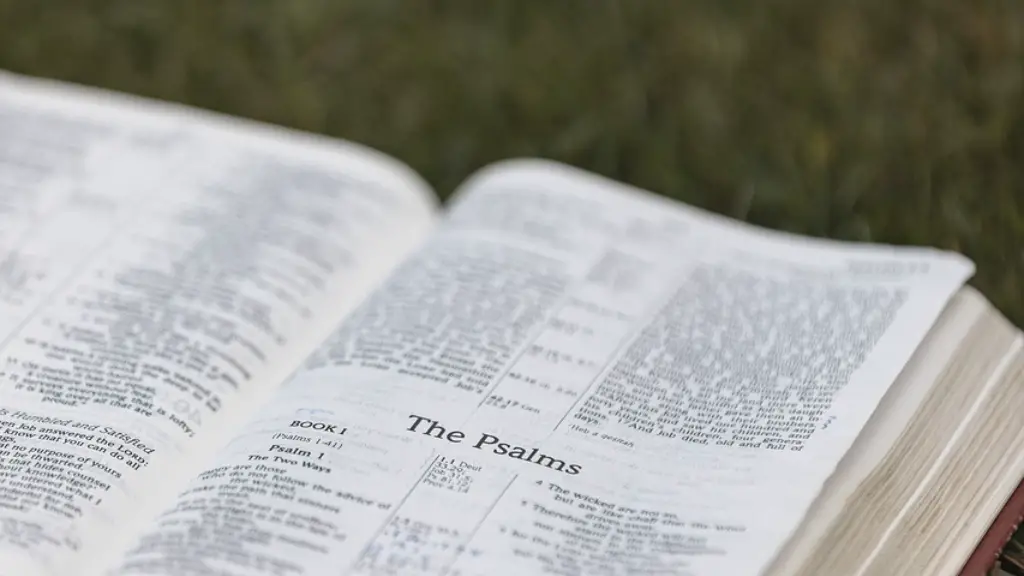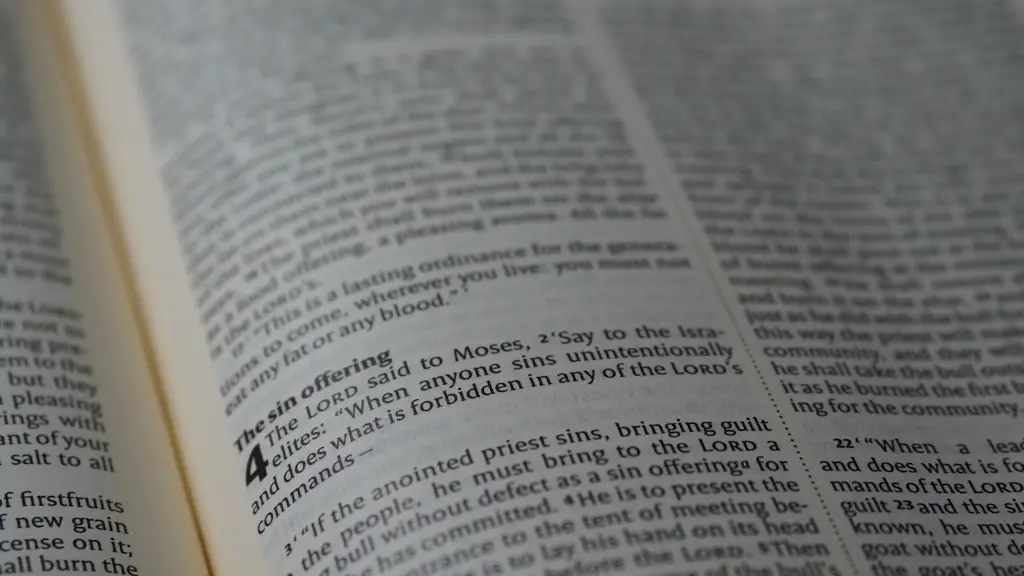Ever since Christianity has existed, there have been debates about the idea of hell and the afterlife. Whilst many believe that there is an eternal punishment faced by those who have not accepted Jesus Christ, there are still much ambiguity surrounding the definitions and descriptions of hell, which ultimately became a part of the Bible. This article explores whether the Bible actually provides a description of hell and will provide a comprehensive analysis of the interpretations of hell, its geographical location and the various conceptions of it.
To begin with, some Christian denominations believe that according to the teachings of the Bible, hell is a physical place, located at the center of the Earth. In contrast, there are those who think of hell as an unseen spiritual dimension and a ‘state of being’, thus denying a literal description of the place outlined in the Bible.
In terms of biblical references to hell, the first to appear is Sheol in the Old Testament, which means ‘the abode of death’, which is a dark and gloomy place. Additionally, scholars have identified that the New Testament, in particular the book of Revelation makes references to the “lake of fire”, where the sinners and their Lord Satan will be condemned. The book of Matthew also mentions “everlasting fire” where sinful souls will be banished.
Aside from textual descriptions, one can also take a look at the various cultural connotations of hell in Christianity. According to Dante’s Inferno, hell is divided into nine circles, each with its own grotesque punishment. This idea has however been heavily contested, and multiple reformations have emerged revolving around the detrimental effects of Hell – such as 16th century German reformer Phillip Melanchthon’s view that the underworld was empty and not in existence.
Raising further questions about this concept is the modern idea of the infamous ‘hellfire’ and the concept of an eternal punishment, especially in terms of the soul being reunited later on with a ‘heavenly’ power. Some also argue that the Bible does not provide an adequate description, and that it is instead dependent on the spiritual beliefs of each individual.
Perceptions of the Afterlife
Perceptions of hell and the afterlife vary widely, spanning from different denominations of the faith who have debated what happens to the souls of humans after their death. Some cultures such as the Ancient Greeks arguably believed in an underworld where the dead, priests and rulers would reside, a concept which developed into Hades, whilst other theories have been proposed by religious reformers such as Martin Luther, who suggested the dead went to a state of ‘sleep’ before the resurrection.
Comparatively, the Book of Revelation in the New Testament paints a much darker picture of the afterlife, illustrating it as a place of both judgment and torment (akin to Dante’s Inferno). Similarly, the Old Testament and the Torah suggest the existence of some final form of judgment and retribution for sinful acts, though the nature of it may not necessarily be fire and brimstone.
Another concept worth noting is the idea of Purgatory in the Catholic faith, which posits the existence of a place between hell and heaven in which souls can be purified before receiving eternal life. Seeing as this is not referenced in the Bible, even amongst traditional Catholics it’s seen as a rather contentious topic.
Implications of Depictions of Hell
In terms of religious practice, it is important to consider the implications of depictions of Hell, as they are often used to motivate individuals to repent and those who reject the faith to accept it. Examples of this can be seen in Christian evangelism more broadly, where the possibility of an afterlife of eternal torment and suffering is discussed to persuade individuals to choose faith. More broadly, this concept can be extended to the ‘fear of death’ in Western societies and the implications of this belief system’s influence on our behaviour.
Conversely, some theologians such as Saint Augustine have questioned the validity of the idea of Hell. Taking a more philosophical approach to the concept, Augustine suggested that if one genuinely believes in the power of a loving God – then it would be unreasonable for him to make people suffer in this way. Furthermore, he suggested that an omnipotent and omniscient God would surely recognise it to be irrational to punish sinners who cannot necessarily fix the judgement on them. It is this philosophical approach that many have explored in interpreting Bible passages, in particular the New Testament.
The topic of whether the Bible actually provides a description of Hell is thus a highly contested one. Whilst it may provide some rather gruesome visuals, scholars have argued that it nonetheless can not be taken literally and has to be understood within its cultural context. Equally, the notion of Hell remains highly contested not only from a theological aspect, but also from a philosophical point of view, with both sides continuing their debates even today.
Medieval Representations
Whilst the Bible does not offer a clear definition of the afterlife, literature from the medieval era offers some additional details. One example of this is the Divine Comedy written by Dante; it presents an intricate nine circle structure of punishment and suffering, which varies in its levels of punishment depending on the sin. Moreover, this view also involves a “last judgement” where God judges souls accordingly to their behaviour.
This classical structure of hell is then echoed in the visual arts, particularly those of the Christian tradition, which offer some additional imagery regarding the various physical manifestations of Hell. In this regard, the Great Becket Window, located in Canterbury Cathedral – presents a vivid depiction of Hell, with graphic representations such as burning pits, torture implements and fearsome occupants, all of whom contribute to an atmosphere of terror and dread.
Although these graphic depictions form an important part of the Christian tradition, it is important to note that today these remain mostly symbolic, and not necessarily literal depictions. As such, a key question remains – what does the Bible ultimately describe regarding the afterlife?
Interpretations of the Bible
That being said, the Bible is notably a rich source of imagery and myth, and many commentators and scholars suggest that it is primarily intended to provide a moral framework in order to instruct believers on proper “heavenly” conduct – and as such, should not necessarily be taken literally. Therefore, it is important to consider the various interpretations that have been proposed over the centuries, as well as the fact that many of the descriptions of hell found in the Bible are also alluded to in other present-day religious scriptures.
As such, whilst the Bible may offer some frightening visual imagery of what could potentially occur beyond the realms of this planet, it is important to bear in mind the fact that these are merely representations and may not necessarily be taken at face value. After all, it is the interpretations of the text that ultimately determine it’s meaning, and it is up to each individual person to make an informed decision.
Conclusion of Evidence
Ultimately, the question of whether the Bible actually provides a detailed description of Hell remains contested and highly subjective. There are multiple interpretations, ranging from an onslaught of “hellfire” and an eternity in the underworld to the concept of an empty spiritual dimension and the idea of Purgatory in the Catholic faith.
Whilst the Bible does offer some vivid imagery and descriptions, it is ultimately the interpretation of individual believers which determines the validity of a literal description. As such, in order to understand the concept of Hell from a Christian perspective, it is important to consider the various interpretations and views which have been proposed by both scholars and religious reformers over the centuries.




